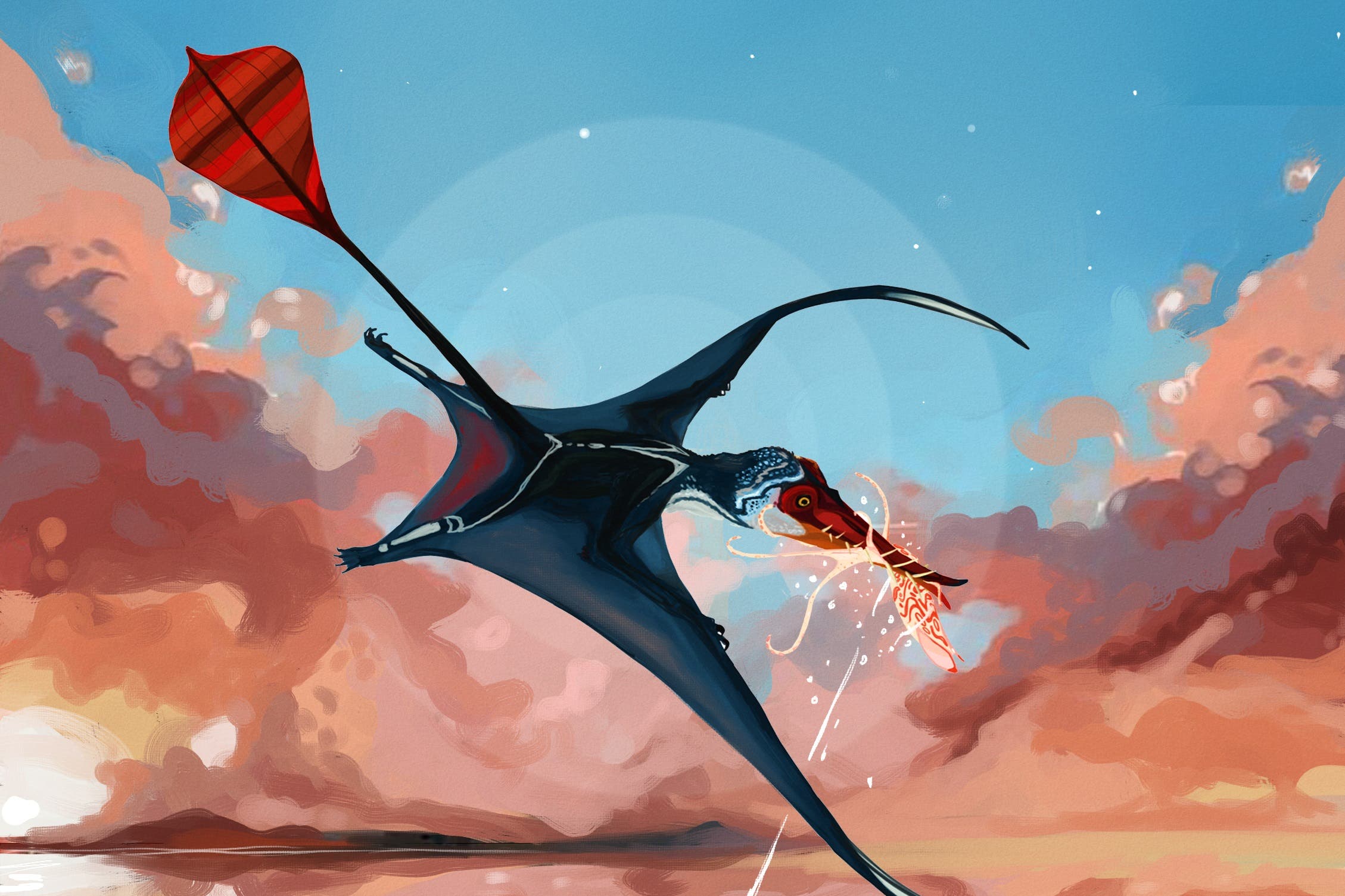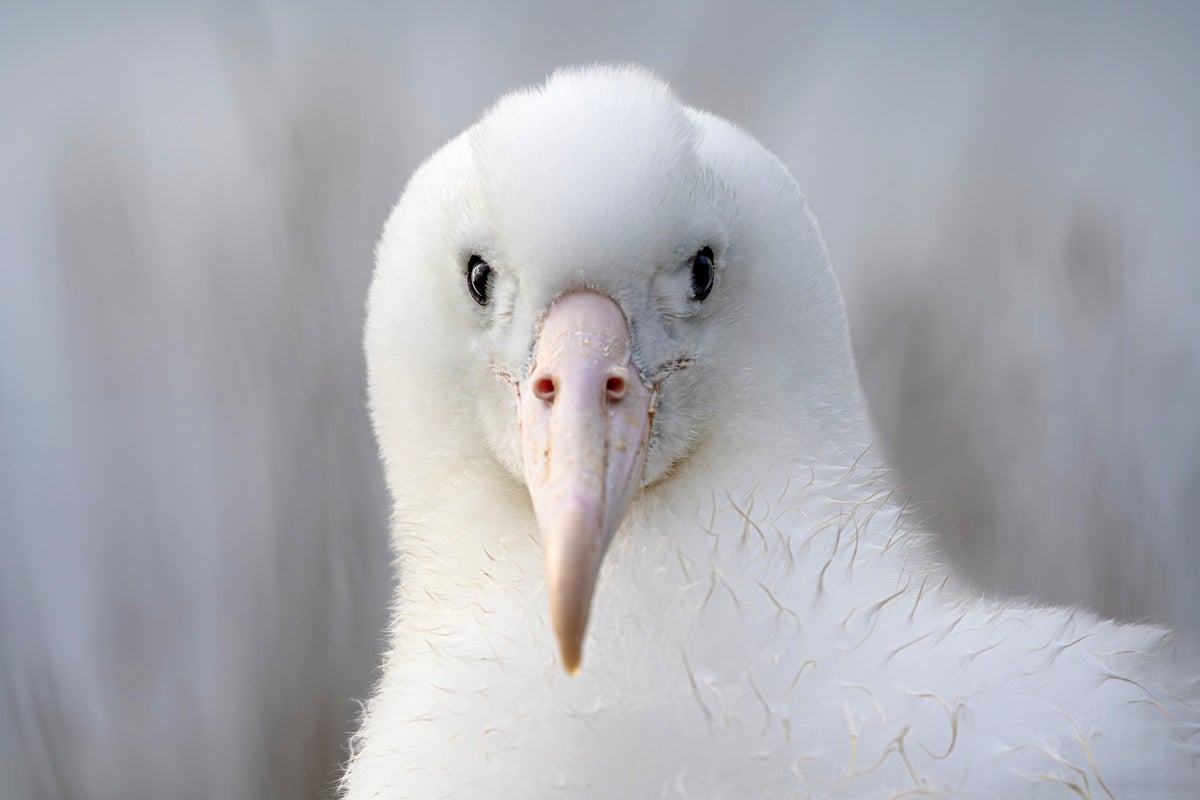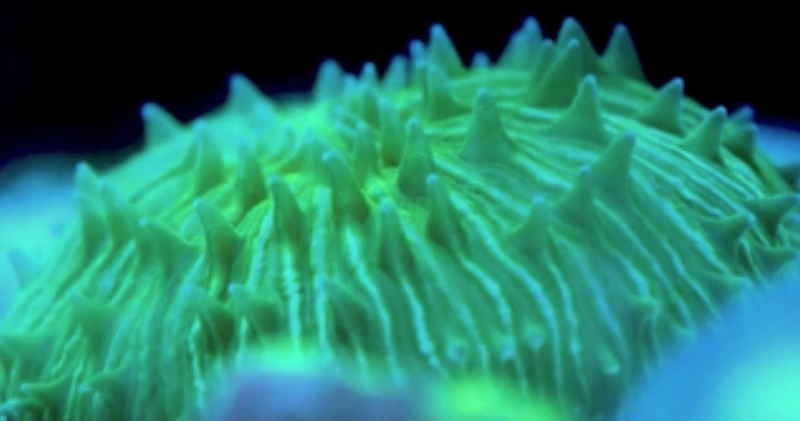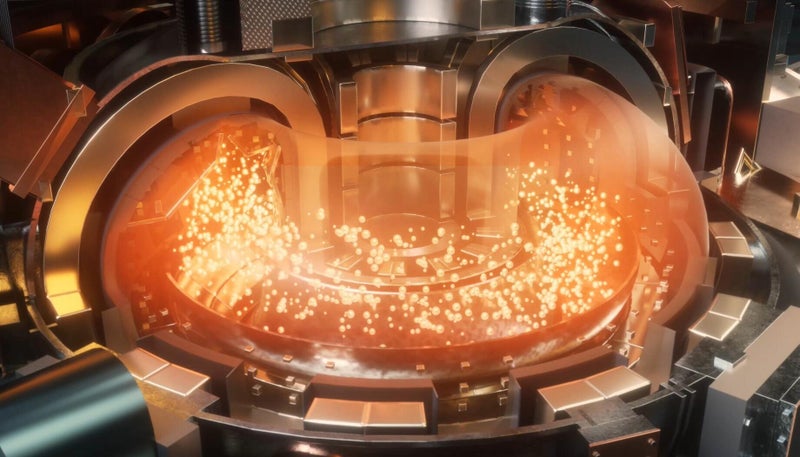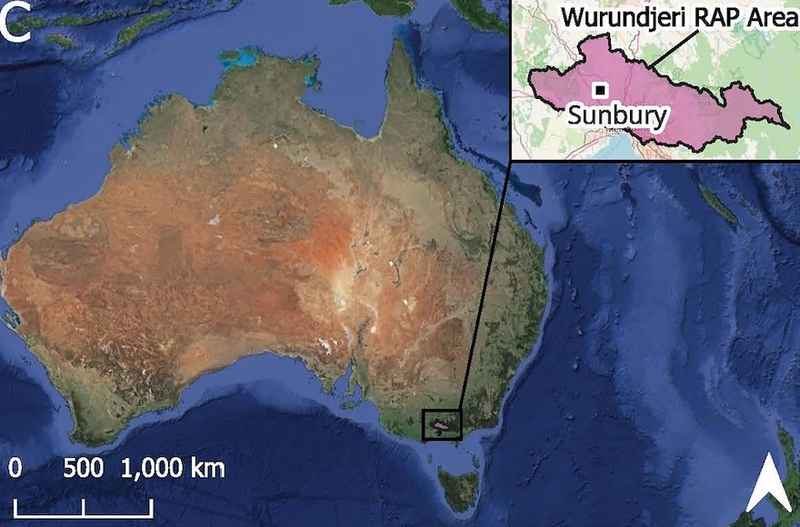Large ‘tail vanes’ enabled pterosaurs to take to the air, scientists announce
Share:
Pterosaurs were able to fly thanks to large sail-like “vanes” at the ends of their tails, palaeontologists have discovered. Researchers have long puzzled over how the winged reptiles – the first and largest vertebrates to achieve powered flight – were able to take to the air.
With the help of new laser technology, a team led by palaeontologists at the University of Edinburgh discovered it was down to the lattice-like vanes attached to the tips of the creatures’ long tails. This study gives us an important glimpse into how early pterosaurs may have first taken to the skies and the importance of their tails while in the air.
The researchers said the diamond-shaped structures, made from interwoven membranes, prevented the animals’ tails from fluttering like flags in the wind, and instead helped guide and stabilise them in flight. They explained that the vanes most likely behaved like the sail on a ship, becoming tense as the wind blew through their cross-linked membranes and so enabling the reptiles to use them to steer through the sky.
Previous research revealed that maintaining stiffness in the tail vane was crucial to enabling early pterosaurs’ flight, but exactly how the was achieved has remained a mystery until now. The team made the breakthrough using a new technique called Laser Simulated Fluorescence, which causes organic tissues almost invisible to the naked eye to glow.
